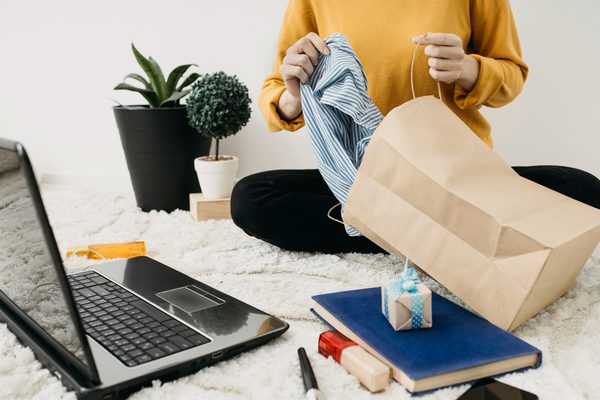Want to know how to color match images for eCommerce and make your products look irresistible? If you’ve ever felt frustrated by mismatched colors in your product photos, you’re not alone.
Accurate colors can change a shopper’s decision to click “Buy Now.” When customers don’t trust the colors they see then they’re less likely to purchase. Also they are more likely to return products that don’t meet their expectations.
In this guide, I’ll walk you through everything you need to know about color matching for eCommerce. You will understand why it’s essential to tackling common challenges like lighting issues and screen variations.
By the end, you’ll have actionable tips to ensure your product images not only look stunning but also help you build trust and boost sales. Let’s get started!
Why Is Color Matching Crucial for eCommerce Success?
Impact on Customer Trust and Sales
Color matching directly impacts how customers perceive your store. Imagine browsing an online store and noticing that the same shirt looks like two completely different shades in two different photos.
That inconsistency makes you second-guess the product’s quality. Studies show that 22% of online shoppers return products because they look different from their pictures. That’s a huge number of sales lost simply because of poor image quality.
Accurate colors in your product images help customers trust that what they see is what they’ll get. This reduces returns and improves customer satisfaction. It’s a win-win for everyone involved!
Building a Strong Brand Identity
Consistency isn’t just about making your product look good. It’s also about creating a recognizable brand. Uniform colors give your store a polished and professional vibe.
Think about top eCommerce brands like Apple or Zara. Their product photos always have consistent lighting and accurate colors. This makes their stores look clean and reliable.
If you want your store to stand out then color matching is non-negotiable. It ensures that your product images look cohesive even when your store has hundreds of products.
Enhanced Visual Appeal
Let’s be honest—images sell products. When customers scroll through your store they judge your products based on what they see.
If the colors in your images are dull or inaccurate then they might skip your product. Color-matched images make your store look more attractive and appealing. They also highlight the product’s true beauty. This helps your customers imagine owning it.
Want proof? Check out some before-and-after examples of color correction in eCommerce images from sites like Shopify or BigCommerce. You’ll see how big of a difference accurate color makes in grabbing attention.
Top Professional Ecommerce Image Editing Services (2025)
Common Challenges in Color Matching for eCommerce
Lighting Differences in Product Photography
One of the biggest problems with color accuracy comes from inconsistent lighting. The color of a product can change drastically depending on whether the photo was taken in natural light, studio light, or under a warm indoor bulb.
For example, a white shirt might look yellowish under warm light or bluish under cool light.
To avoid this, make sure you shoot your photos in consistent lighting. Natural light works best. But if you’re using artificial lights then stick to the same setup for all your shots.

Device and Screen Variations
Here’s a fun fact: your product images look different on every screen. The colors you see on your desktop monitor might not match how they appear on a smartphone or tablet. This happens because every screen displays colors differently depending on its settings.
You should calibrate your editing monitor regularly to tackle this. You can use tools like SpyderX Pro or X-Rite i1Display to ensure your monitor shows accurate colors. Once your images are ready, test them on multiple devices to see how they appear across screens.
Material and Texture Effects
Different materials and textures reflect light in unique ways. This makes color matching a bit tricky. For example, a shiny metal product may look brighter than a matte fabric. Even if they’re the same color in real life. This is really common with products like jewelry, clothing, and accessories.
Try using color reference tools like X-Rite ColorChecker or physical color swatches to handle this. These can help you match the product’s true color during the editing process.
Human Perception of Color
Believe it or not, our eyes don’t always see colors the same way. What looks like a deep red to one person might appear slightly orange to another. This subjective perception makes color matching more challenging.
You can rely on tools like color calibration charts and software instead of your naked eye. This ensures that the colors in your images are objectively accurate. No matter who views them
Also Check 👉🏻 The best size for ecommerce product images
Tools and Software for Color Matching Images
Photo Editing Softwares for Color Matching Images
Having the right photo editing tools is essential when it comes to how to color match images for eCommerce. Here are some popular options:
- Adobe Photoshop: Adobe Photoshop is my go-to tool for precise color correction. Its Color Balance, Curves, and Hue/Saturation adjustments allow you to tweak colors until they look just right. You can also use the Selective Color tool to target specific hues.
- Lightroom: If you need to edit multiple images quickly then Adobe, Lightroom is fantastic for batch editing. Its sliders for white balance, exposure, and vibrance make adjustments simple and efficient.
- Free Alternatives: For beginners or those on a budget, tools like GIMP and Canva are great. GIMP offers advanced editing features similar to Photoshop. On the other hand, Canva is perfect for basic color tweaks and quick designs.

Color Calibration Tools
Accurate color matching starts with a properly calibrated screen. Here’s what I use:
- Monitor Calibration Devices: I use SpyderX and X-Rite i1 Display to ensure my screen displays true colors. Calibration is vital because even slight inaccuracies can lead to mismatched product photos.
- Calibration Best Practices: I recommend calibrating your monitor every few weeks. This is really important if you edit images regularly.
Color Charts and Swatches
Color charts and swatches make it easier to match colors across different images.
- X-Rite ColorChecker: This is one of the most popular tools for photographers and editors. It also helps you match colors accurately by providing a physical reference.
- Using Swatches: If you work with specific products then keep physical swatches to compare colors directly with your photos. This step ensures precision and consistency.
Also Check 👉🏻 Best Ecommerce Image Editing Software for Flawless Product Photos
Step-by-Step Guide: How to Color Match Images for eCommerce
Step 1: Prepare Your Workspace For Color Matching Images
Before you even start editing, it’s important to set up your workspace correctly. Proper lighting plays a huge role in how you perceive colors on your screen. You also need to make sure your room has neutral lighting. Neither too warm nor too cool.
Next, calibrate your monitor. I recommend using tools like SpyderX or X-Rite for accurate color calibration. This ensures what you see on your screen matches the actual colors of your product.
If you skip this then you might end up with images that look completely different on other screens.
Step 2: Use RAW Images
Always use RAW image files if possible. Unlike JPEGs, RAW files retain all the data captured by the camera sensor.
This also gives you greater control over editing and ensures better color accuracy during the post-processing stage.
If you’re unfamiliar with RAW files then you can easily convert them using tools like Lightroom or Adobe Camera Raw. Working with RAW images gives you a clean slate to adjust white balance and other color settings without losing quality.
Step 3: Adjust White Balance On The Images
White balance sets the tone for your entire image. If the whites look too warm or too cool then the other colors will appear off.
Locate the white balance adjustment tool using software like Adobe Photoshop or Lightroom. Click on a neutral area of your image like a white or gray object. This will automatically correct the balance. You can fine-tune it manually if needed.
Getting the white balance right is the foundation for accurate color correction. Even the best editing tools can’t give you perfect results without it.

Step 4: Match Colors Using Reference Images
If you’re editing eCommerce product photos then consistency is key. You can use reference images or physical samples to ensure that the colors in your photos match the actual product.
For example, if you’re editing a blue shirt then have the shirt or a professionally photographed image of it nearby.
Tools like Adobe Photoshop’s eyedropper tool can help you sample the exact color and apply it to your image.
Using color swatches or charts, like the X-Rite ColorChecker can also make this process faster and more precise.
Step 5: Fine-Tune Using Hue, Saturation, and Brightness (HSB)
Once the basic colors look right, fine-tune them using the Hue, Saturation, and Brightness (HSB) sliders in your editing software.
- Hue adjusts the actual color (e.g., changing red to orange).
- Saturation controls how vivid the color appears.
- Brightness determines how light or dark the color is.
For example, if a product looks slightly dull then increase its saturation slightly. If the color feels too intense then tone it down for a more natural look
Step 6 Batch Process for Consistency Across Images
Batch processing can save a ton of time when editing multiple images. Most software, like Lightroom or Photoshop helps you to copy edits from one image and apply them to others.
Here’s how I do it:
After editing the first image I sync the settings (white balance, HSB adjustments, etc.) across all similar photos. This helps me to maintain consistency. I do this for all eCommerce listings where all product images need to look uniform.
Step 7: Test Across Devices After Color Matching Images
Finally, test your edited images on different devices. Because as mentioned earlier what looks good on your monitor might not look the same on a phone or tablet.
I usually view my images on at least three screens – my calibrated monitor, a smartphone, and a standard laptop screen. This step helps me spot any inconsistencies and ensures that the colors look accurate no matter where customers view the product.
This step-by-step guide should help you achieve perfectly color-matched images for your eCommerce store.
By following these steps, your product images will look professional, consistent, and accurate. This is exactly what your customers expect when shopping online.
Tips for Maintaining Color Consistency in Your eCommerce Store
Create a Color Style Guide
- Why It’s Important: A color style guide ensures everyone on your team follows the same editing standards. Document the exact color values (RGB or HEX) for each product.
Standardize Your Photography Setup
- Consistent Settings: Use the same camera, lighting, and backdrop for every product photo. This minimizes color variation between images.
Use Neutral Backgrounds
- Why Neutral Works: Neutral backdrops (like white or gray) don’t interfere with the product’s colors. This also makes it easier to achieve accurate color matching.
Outsource to Professional Photo Editors
- Expert Help: If you’re short on time or expertise then outsourcing to professional photo editors can save you the hassle. Companies like Smart Clipping specialize in photo editing for eCommerce.
Regular Monitor Calibration
- Set Reminders: Make it a habit to calibrate your monitor regularly. Even slight shifts in display accuracy can impact your edits over time.

Mistakes to Avoid When Color Matching eCommerce Images
Ignoring White Balance Adjustments
One of the most common mistakes is skipping white balance adjustments. If the whites in your images look off then it can throw off all the other colors. Always take the time to correct white balance before moving on to other edits.
Using Uncalibrated Monitors for Editing
Editing on an uncalibrated monitor is a big no-no. Colors on your screen might look completely different from how they appear on other devices or in real life. You can use tools like SpyderX or X-Rite to calibrate your monitor regularly.
Over-Saturating Product Images
It’s tempting to boost saturation to make product images pop. But overdoing it can make the colors look unnatural. Customers expect product photos to reflect reality. So keep the saturation balanced.
Neglecting Shadows and Highlights
Shadows and highlights can change how colors appear in your product images. If shadows are too dark or highlights are blown out then the product’s colors won’t look accurate. Adjust these elements carefully during editing.
Skipping Color Testing on Different Devices
After editing, always test your images on multiple devices like phones, tablets, and laptops. Colors might look different depending on the screen and you need your product to look accurate across all platforms.
Advanced Techniques for Perfect Color Matching
Using LUTs (Look-Up Tables)
LUTs are a powerful tool for color matching. They allow you to apply pre-defined color profiles to your images. They also make the process faster and more consistent.
Tools like Photoshop and Luminar Neo offer built-in LUTs for specific color styles.
Blending Modes in Photoshop
Blending modes like Multiply and Overlay can help you adjust colors with more precision. I often use these modes to fine-tune colors without affecting the overall brightness of an image. It’s a simple but effective way to achieve professional results.
Color Grading for Artistic Consistency
If you’re working on multiple product images then consider applying consistent color grading. This technique is especially useful for branding. Because it creates a cohesive look across all your images.
You can use tools like Lightroom to apply the same color adjustments to all photos in a batch.
The Role of AI in Color Matching Images for eCommerce
AI-Powered Color Matching Tools
AI is changing how we edit eCommerce images. Tools like Luminar Neo and Adobe Sensei use AI to automatically detect and adjust colors in your photos. These tools are perfect for streamlining the editing process, especially if you’re working with large product catalogs.
Benefits of AI Automation
AI tools save time and improve accuracy. They can quickly adjust white balance, match colors, and even apply edits in bulk.
For example, Luminar Neo’s AI-based color correction feature can help you achieve consistent results with minimal effort.
Best AI photo retouching softwares
Limitations of AI Tools
While AI tools are helpful but they’re not perfect. They might miss subtle details that a human editor can catch. For critical edits, especially for high-end products, a combination of AI tools and manual adjustments is the best approach.
If you need professional-level color match images for eCommerce then you should definitely hire professional image editing and color correction companies.
Here is a list of the best photo editing and retouching service providers.
By avoiding common mistakes and using advanced techniques like LUTs and blending modes, you can create professional, accurate, and visually appealing product images for your eCommerce store. With AI tools as your assistant, the process becomes even smoother and more efficient.
Real-Life Examples: Color Matching Done Right
Case Study 1: A Fashion Store with Flawless Color Accuracy
Let’s talk about StyleBloom, a mid-sized online fashion retailer. They struggled with customer complaints about product colors not matching their online images.
For example, their “ocean blue” dresses often looked like “teal” on some screens, leading to a higher return rate.
After implementing a proper color matching workflow, including white balance correction, device calibration, and consistent lighting during photoshoots, their results improved dramatically. They also tested their images on various devices to ensure accurate color reproduction.
The outcome? Their return rate dropped by 25%, and customer retention improved by 15% within six months. Accurate colors built customer trust, and shoppers felt more confident making purchases.
How Fashion Retouching Supercharge Your Brand Identity
Case Study 2: A Home Décor Brand’s Visual Transformation
Another great example is CozyNest Décor. This is a home décor brand specializing in pillows and furniture. Their product photos often had mismatched colors due to inconsistent lighting and uncalibrated monitors. Customers frequently returned items, claiming the colors were different from what they saw online.
To fix this, they used LUTs (Look-Up Tables) to maintain color consistency across all product images. They also used AI-powered tools like Adobe Sensei to automate color corrections, which sped up their workflow significantly. Before publishing, they tested their images across devices and even printed sample photos to ensure accurate results.
The results were impressive. Their website conversion rate jumped by 18%, and customer complaints about color dropped by over 30%. The before-and-after images of their product photos clearly showed how precise color matching enhanced their brand’s credibility.
If you’re looking for similar success, tools like Luminar Neo or Adobe Lightroom can simplify the process for your eCommerce business.
These examples show how important it is to understand how to color match images for eCommerce. If you run a fashion store or sell home décor then accurate colors can directly impact customer satisfaction and sales.
You can achieve similar results by applying the techniques I shared earlier and make your eCommerce images look professional.
Wrapping It Up: Final Thoughts on Color Matching for eCommerce
Color matching is essential for any eCommerce business. They build trust with customers when your product images display accurate and consistent colors. This trust leads to fewer returns, higher sales, and better customer satisfaction.
I encourage you to follow the steps in this guide and experiment with the techniques I’ve shared. If you are learning how to use blending modes, LUTs, or testing images across devices then these methods can make a real difference in your business.
If you’re feeling overwhelmed or need professional help, we’ve got you covered. Smart Clipping specializes in image editing services, including color correction and product image retouching.
Need help with color matching? Contact us for professional image editing services, and let’s make your eCommerce images stand out!
Frequently Asked Questions About “How to color match images for eCommerce”
What is the best software for color matching images?
The best software for color matching depends on your needs. If you’re looking for professional tools, Adobe Photoshop and Lightroom are great options. They offer precise control over color adjustments. For AI-powered automation, tools like Luminar Neo and Canva Pro are also reliable. These tools make it easy to learn how to color match images for eCommerce.
How do I ensure color accuracy across devices?
Color accuracy across devices starts with calibrating your monitor. Use tools like X-Rite i1Display or SpyderX to adjust your monitor’s settings. Always test your images on multiple devices, including desktops, laptops, and smartphones. This step ensures consistent colors for your eCommerce images, no matter where they’re viewed.
Do I need professional equipment to color match images?
While professional equipment like monitor calibrators can improve results, you don’t always need them. Many tools, like Adobe Lightroom or free online editors, provide color correction options. But investing in professional gear is a good idea if you handle a large volume of images regularly.
How often should I calibrate my monitor?
You should calibrate your monitor at least once a month. This habit ensures that your monitor displays colors accurately. If you work in changing light conditions, calibrating more frequently can help maintain consistent results.
Can I use my smartphone for color matching tasks?
Smartphones are great for reviewing images, but they’re not ideal for precise color matching. Their screens are not always calibrated for accurate colors. It’s better to use a desktop or laptop with a calibrated monitor for professional-quality results.

